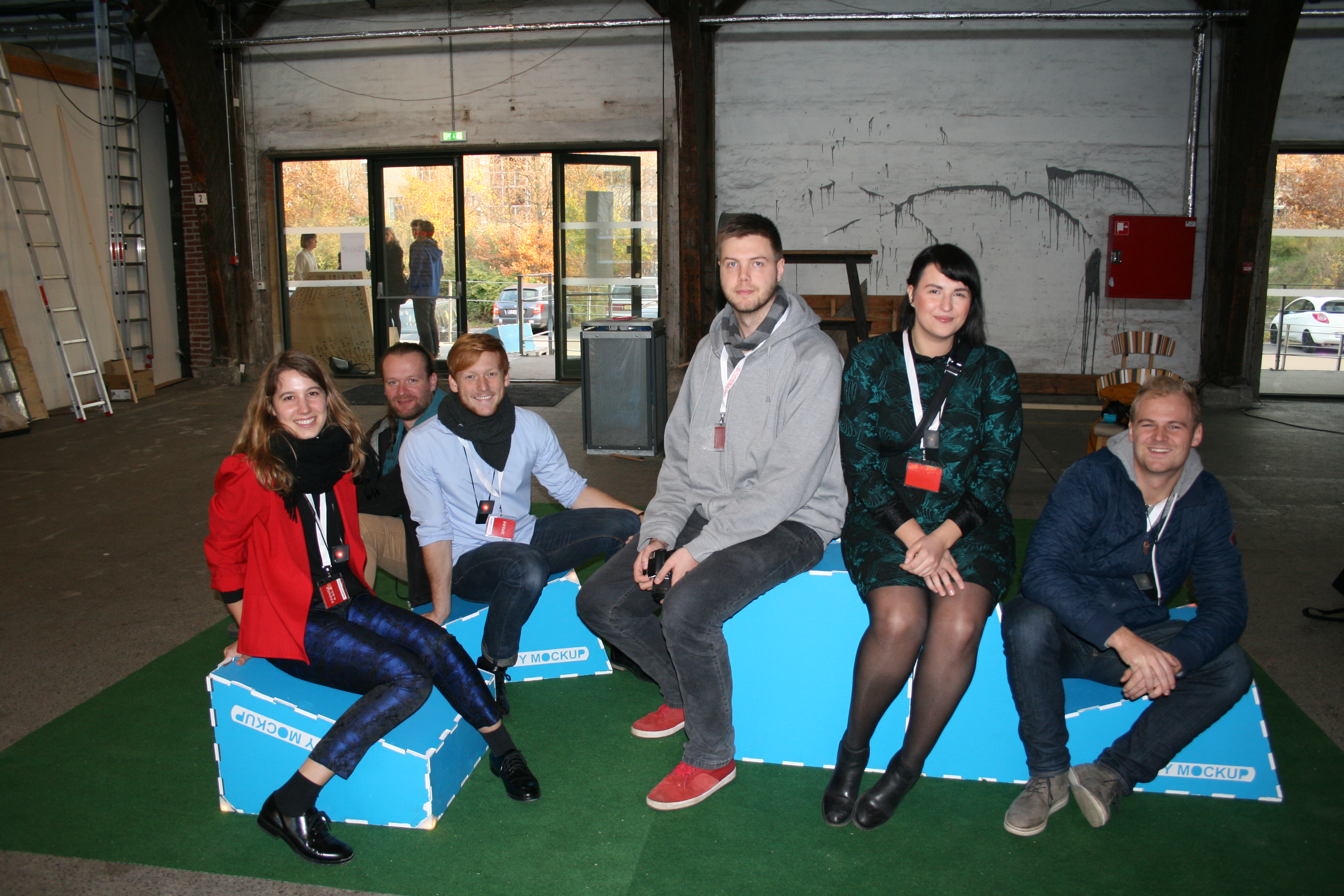Students´ project to be displayed at an international conference.
Among many other things, the recently finished Media Architectural Biennale, MAB14, also included a presentation of a new installation, designed by students from Media Science, Digital Design and Computer Science.

As part of the AU course Urban Computing, seven students from Media Science, Digital Design and Computer Science have designed a new installation, consisting of seven boxes, which are to be placed in the urban space of Aarhus. The whole idea with this installation is that it is up to the citizens to decide how the boxes should be put together. The boxes contain special technology, making it possible for the citizens to vote online, as to which installation they would prefer to have in their neighborhood. Furthermore, the technology is able to detect whether the installation is being used or not.
`The boxes are equipped with small Bluetooth transmitters, which enable them to communicate with the mobile phones of the users. Furthermore, small sensors are able to detect if there is any activity around the installation or not. If nobody uses the installation, we will just take it apart, and place it in another neighborhood´, says Jonas Frich Pedersen, member of the Urban Computing team.
Influence provides a feeling of ownership
According to the Urban Computing team, the citizens should have a say in how the installation should look, simply because it strengthens people attachment to their neighborhood.
`Whenever the citizens get to create their own urban space, it is our hope that they will also like it better, and use it more actively, than they would if someone from the outside just stepped in and decided what the installation should look like. We want this to be a fun toy, which also challenges people creativity. Up until now, we have seen the installation being used as a set of café furniture, a bench and a sunbed´, says Marie Louise Juul Søndergaard, member of the Urban Computing team.
Interdisciplinarity creates specialist knowledge
The members of the Urban Computing team come from five different academic environments. Thus, each student gets to be a specialist within his/her own field of knowledge.
`We all have different professional competencies, and there has, therefore, been an entirely natural distribution of roles, so that we have each had our own area of responsibility. When working across different academic professions, you also get to discuss quite a lot, because everybody has different priorities. This has been a very useful exercise, because we will be facing the same situation when we get out into the labour market´, says Michael Obitsø Vile, member of the Urban Computing team.
An extended network
The seven students are proud of the fact that their teachers have trusted them to be able to create something worth presenting at the MAB14 conference. At the same time, having to show the result to the public has been a major motivational factor.
`When you are working on something that other citizens are to interact with in real life, you become more dedicated. At the same time, we have also been under quite a lot of pressure, because many of the participants in the conference have so much experience and knowledge regarding everything that has to do with urban planning. Fortunately, we have received nothing but positive feedback to our project, and the dialogue with some of the participants have enabled us to create an extensive network, which may be beneficial to us in the future´, says Tau Sand, member of the Urban Computing team.
Read more about the projects of the Urban Computing team at the team blog.
Facts
- The seven students that make up the Urban Computing team are: Melisa Jugo, Jonas Frich Pedersen, Daniella Rossi, Tau Sand, Sven Strandbygaard, Marie Louise Juul Søndergaard og Michael Obitsø Vile.
- The term Urban Computing refers to embedment of information and communication technology is the urban space, which, to an increasingly large extent, turns the physical items in the environment into information storing units, and makes them dynamic, changeable and, thus, open to interaction design.
